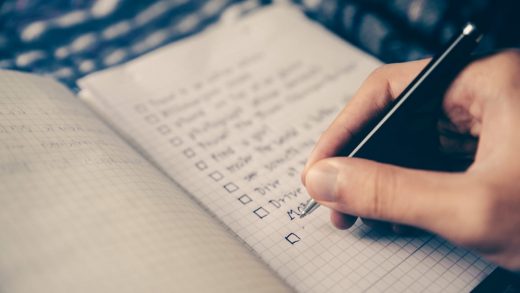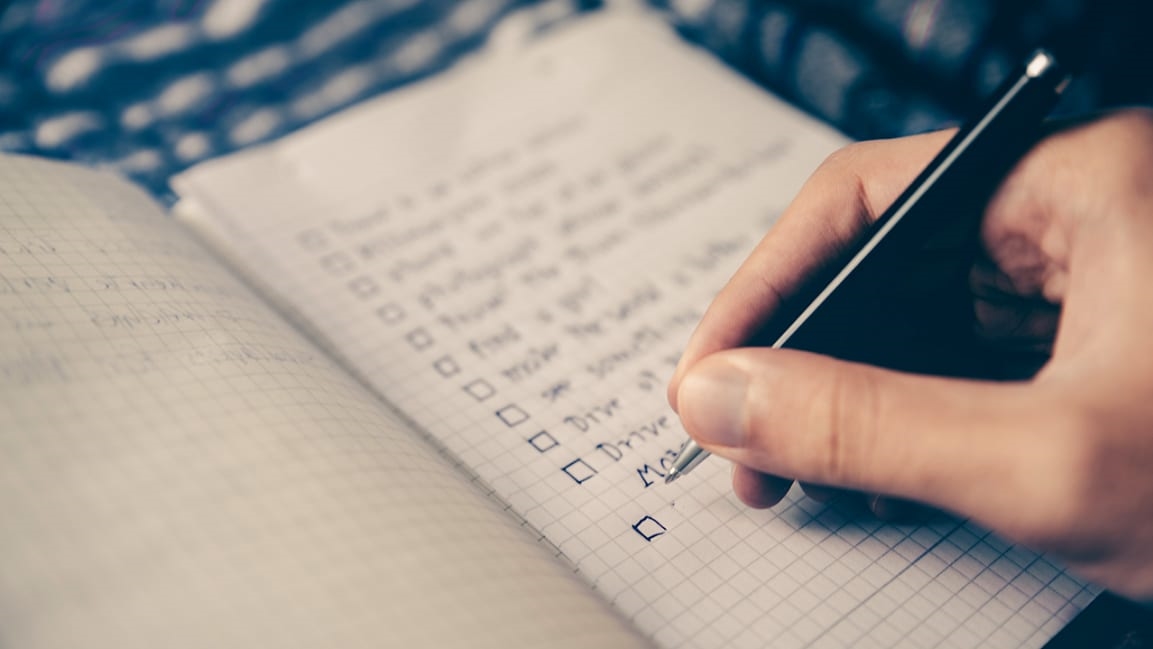How my productivity improved when I stopped using a to-do list
When it comes to getting things done, the to-do list is the holy grail. We’ve uncovered Leonardo DaVinci’s, and we know Benjamin Franklin had one, too. Really, who’s to argue with the original Renaissance man and a Founding Father? Me.
I love my to-do list. But recently, something interesting happened. I was feeling more stressed and more overwhelmed than usual. You know that feeling, right? So, I tossed my to-do list–and chaos did not ensue. In fact, I found myself ditching the feeling of jittery stress and eased into the flow of having no list. Then, I cranked out even more solid work.
Here are the five things I learned by tossing my to-do list:
1. My list was limiting my creativity
I found that my rigid list was hampering my ability to tackle a project that needed more of a creative thought process. A study by the Wisconsin School of Business suggests that when you regularly complete clear-cut tasks, it starts to impact your ability to creatively problem solve.
You can try this: Next time there’s a project to tackle, instead of writing down each step, give yourself some time to brainstorm and then take one step at a time without having the entire project mapped out. It will allow your brain to relax, get into the zone, and help you come up with out-of-the-box solutions.
2. My list was not the important work
I love to check things off my list. But if I’m being honest, what I cross off isn’t always the stuff that moves the needle. Stephen Covey, master of productivity, talks about Quadrant II tasks–tasks that are important, but not urgent. I took a closer look at my to-do list and found quite a few things that were urgent, but not necessarily important. You know, the fire drills. Sure, these things need to get done (like five minutes ago!) but in the long run, they may not be the tasks that really support my long-term goals.
You can try this: Create a list for the week that includes a mix of the urgent but not necessarily important and the important but not urgent. This allows you to tend to the day-to-day necessities while carving out the time to do the things that can have a long-lasting impact.
3. My list was totally stressing me out
My to-do list was longer than a 5-year-old’s list to Santa. No wonder I was feeling overwhelmed. “How will I ever get all of this done?!” kept looping through my mind. When I’m in total stress mode, I usually hang out with my good friend Google (instead of focusing), and I learned that my long list was adding to a sense of “pre-crastination.” This is what happens when you try to get it all done as soon as possible, to make the feeling of overwhelm go away. Interesting, right? The only problem is there’s always stuff on the list. So you find relief, but not for long.
You can try this: Write everything down on one big, super long master list. Now, it’s out of your head and in one place. Then tear it up. (Just kidding!) After you’ve created your master list, put it away. Once a week, take out your master list and carefully decide what can be done in the upcoming week. Then, use your weekly list to figure out what you’ll do each day.
4. My list was someone else’s agenda
A real eye-opener was the number of tasks on my list that were for someone else. I started to wonder, why did I commit to them in the first place? Have you ever signed up for something because it sounded like a great opportunity in the moment? You are so not alone.
You can try this: You may not be able to get out of the commitments you’ve made. However, you can be mindful of what you do say yes to in the future. Make it a practice to not agree to anything on the spot and give yourself time to think things through before you commit.
5. My list was not adding up!
My typical work day is eight hours, but the tasks on my list were adding up to well over 20 hours. I needed to re-work the math–in my favor!
You can try this: Instead of using a to-do list, schedule your tasks directly into your calendar. Now, you’ll be clear on what can really be done and when.
There’s no doubt about it, to-do lists are useful tools. But be sure it’s a tool that’s supporting you, and not stressing you. The next time you’re feeling the stress jitters, try taking a deep breath and tossing your list, just for a little bit.
This article originally appeared on Fairygodboss and is reprinted with permission.
(20)



